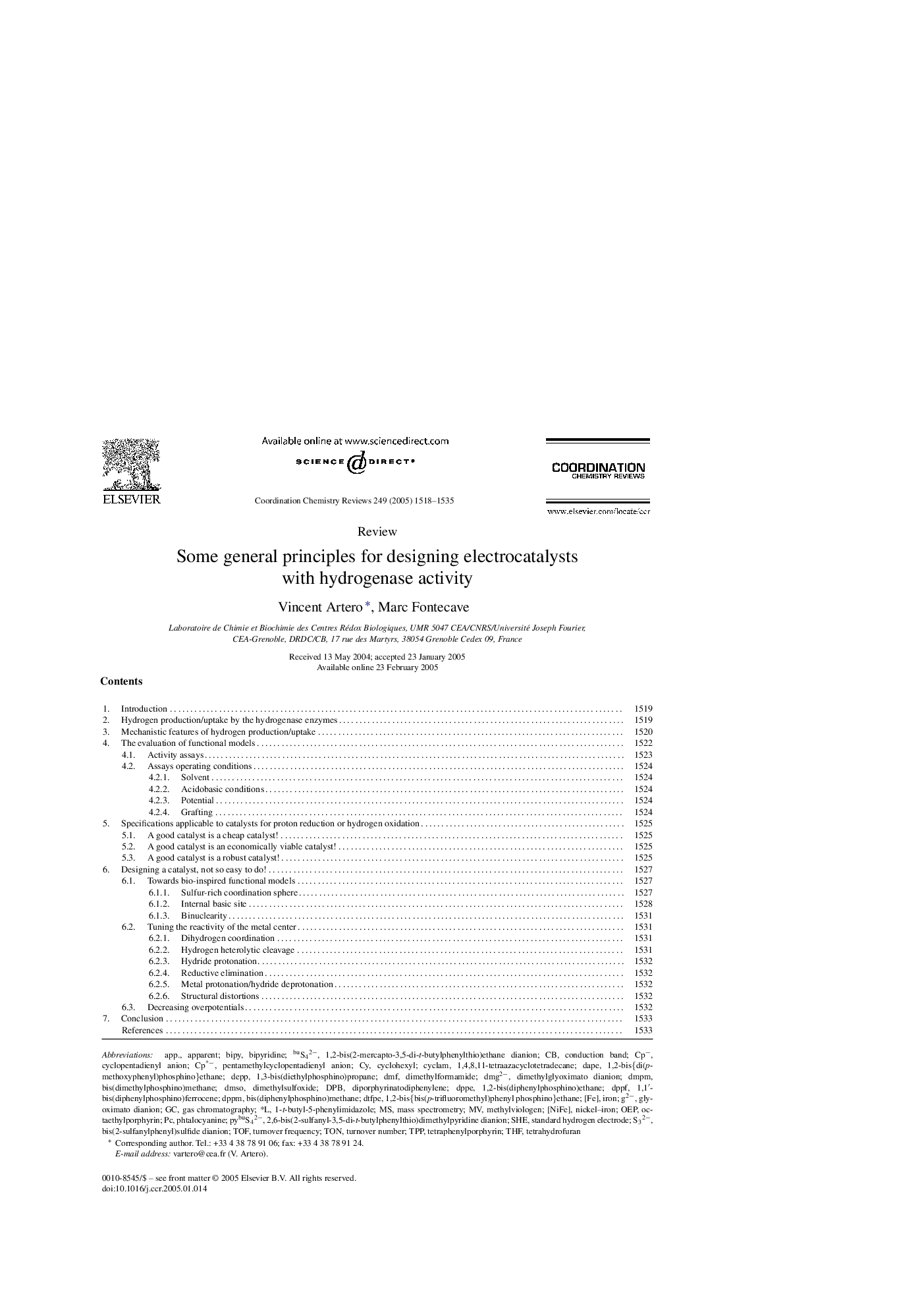| Article ID | Journal | Published Year | Pages | File Type |
|---|---|---|---|---|
| 9763677 | Coordination Chemistry Reviews | 2005 | 18 Pages |
Abstract
Hydrogenases are enzymes that catalyze the reversible interconversion between hydrogen and protons with remarkable efficiency. On the other hand, the design of synthetic electrocatalysts for proton reduction or hydrogen oxidation has been a goal sought for decades, even before the crystallographic determinations of the structure of hydrogenases, namely because of the important technological applications of these reactions (H2 production and fuel cells). This paper reviews the pre-biomimetic functional systems with regard to their mechanism, activity (depending on the assays) and performances (cost, efficiency, robustness). We show how the design of new bio-inspired catalysts should integrate the structural characteristics found at the active sites, in particular those specifically relevant to the activity, but also benefit from the former studies on non-biomimetic systems.
Keywords
Cyclohexyldmpmcyclopentadienyl anionDppfDppmDPPECyclamOEPDMFDPBTOFTHFTPP1,1′-bis(diphenylphosphino)ferrocene1,2-Bis(diphenylphosphino)ethane1,4,8,11-tetraazacyclotetradecaneDMSOTetraphenylporphyrinApparentIronstandard hydrogen electrodeSHEOctaethylporphyrinhydrogen oxidationconduction bandBis(diphenylphosphino)methaneBipyridineTetrahydrofuranturnover numberTONbipydimethylformamideDimethylsulfoxideBioinorganic chemistryMass spectrometryCatalysisTurnover frequencyMethylviologenHydrogenaseDapEProton reductionGas chromatography
Related Topics
Physical Sciences and Engineering
Chemistry
Inorganic Chemistry
Authors
Vincent Artero, Marc Fontecave,
